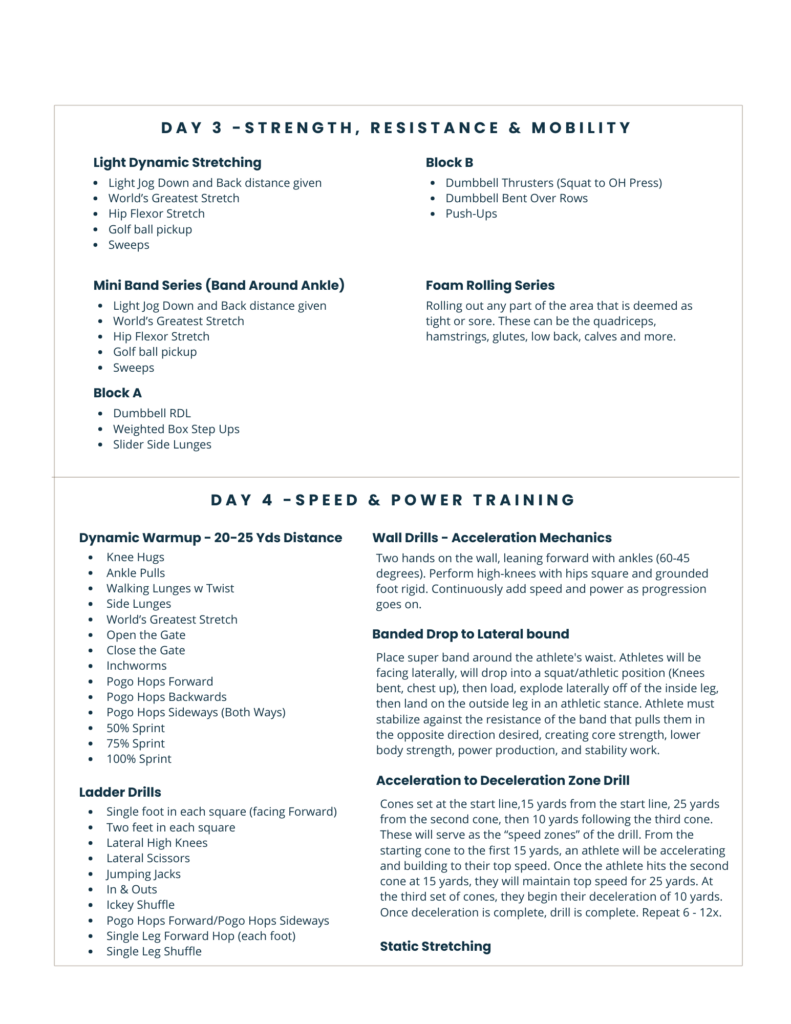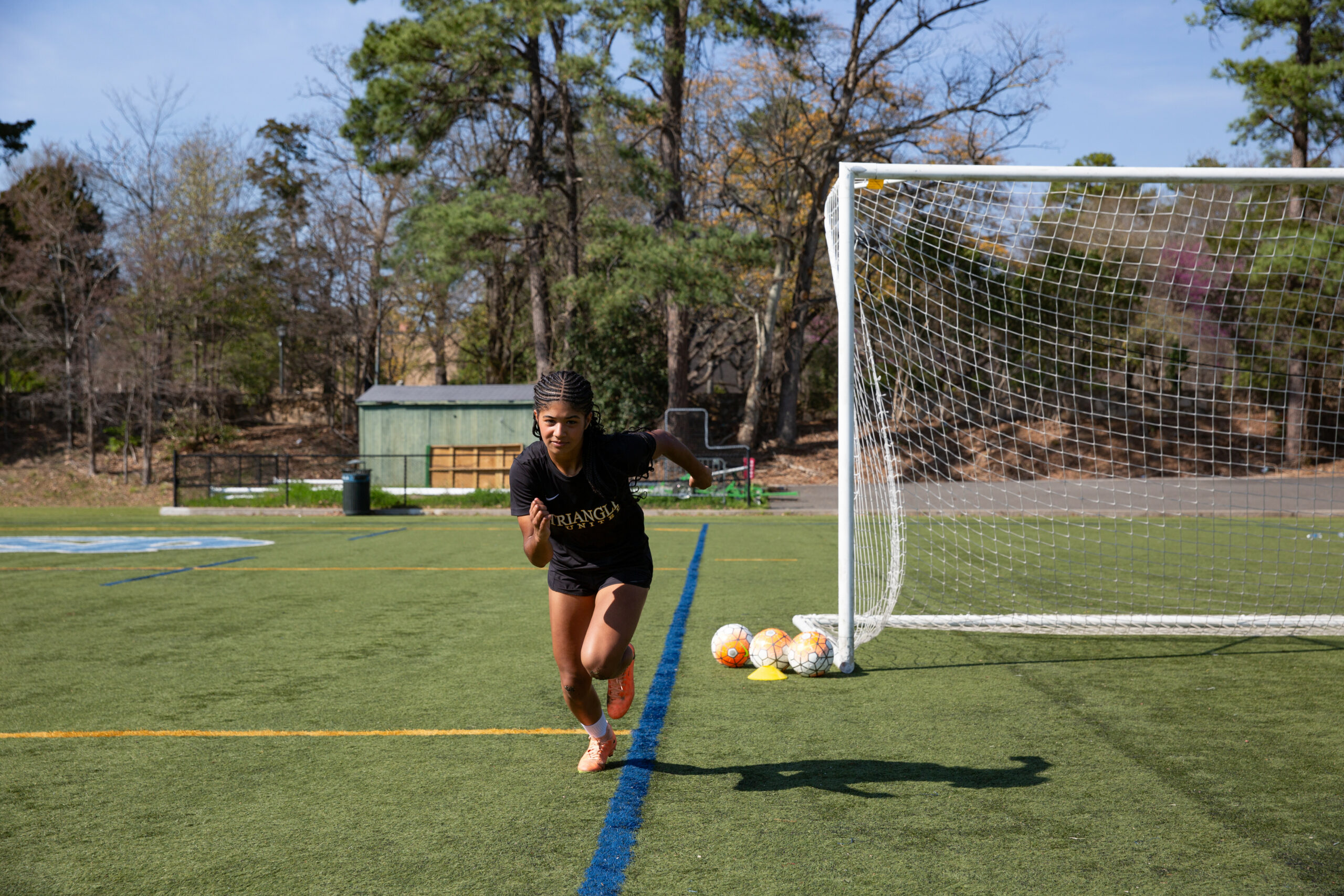As professional youth performance development coaches with years of experience in shaping young athletes, we understand the critical role that off-season strength and conditioning programs play in the development of youth soccer players. While honing technical skills is undoubtedly vital, dedicating time to enhance athleticism during the off-season can truly elevate a player’s game to new heights. In this article, we delve into the importance of an off-season strength and conditioning regimen, highlighting its impact on strength, flexibility, speed, explosiveness, overall performance, and injury prevention.
1. Strength Training (Weight Lifting)
One of the pillars of any effective off-season program is strength training. Weight lifting builds muscle strength, which is essential for executing powerful kicks, maintaining balance during tackles, and outmuscling opponents on the field. Incorporating exercises like squats, deadlifts, lunges, and bench presses (and many others) with proper form and progression can significantly improve a player’s overall strength and durability, reducing the risk of injuries during the season.

2. High-Intensity Interval Training (HIIT)
HIIT is a game-changer when it comes to improving cardiovascular fitness and endurance levels. Soccer is a sport characterized by bursts of high-intensity activity followed by brief periods of rest. Mimicking these demands through interval training sessions not only enhances aerobic capacity, but also trains the body to recover quickly between sprints, enabling players to maintain peak performance throughout the game.
3. Plyometric Jump Training (PJT)
Explosive power is a key attribute that separates exceptional soccer players from the rest. Plyometric jump training focuses on developing fast-twitch muscle fibers, crucial for explosive movements such as sprinting, jumping, and changing direction rapidly. Exercises like box jumps, squat jumps, and bounding drills improve neuromuscular coordination and enhance the player’s ability to generate force efficiently, translating into greater speed and agility on the field.
4. Mobility Training
Flexibility and mobility are often overlooked aspects of athletic performance, yet they play a significant role in injury prevention and movement efficiency. Incorporating dynamic stretching, foam rolling, and mobility exercises into the off-season routine can improve joint range of motion, reduce muscle stiffness, and correct imbalances caused by repetitive movements in soccer. Enhanced flexibility not only reduces the risk of strains and sprains, but also allows players to move more freely and efficiently, maximizing their agility and performance on the pitch.

5. Rest and Recovery
Lastly, but equally important, is prioritizing adequate rest and recovery. Intense training sessions place stress on the body, and without sufficient rest, athletes may experience burnout, overtraining, or increased susceptibility to injuries. Incorporating rest days, proper nutrition, hydration, and quality sleep into the off-season regimen is crucial for allowing the body to repair, rebuild, and adapt to the training stimulus, ensuring that players return to the next season stronger, fitter, and more resilient than ever.
Let us be real for a minute: THIS IS HARD, and … it is what it takes to be a next level athlete. In this high-performance development atmosphere, the emphasis lies in enhancing strength, conditioning, mobility, and agility, fundamental pillars of athletic excellence. The commitment demanded is high, as it necessitates a consistent training regimen beyond technical soccer training. To truly amplify their potential and evolve into superior athletes, youths must embrace a disciplined schedule of supervised strength and conditioning sessions, ideally spanning 2-4 times per week for a minimum of 2 months. This structured approach not only cultivates physical prowess but also fosters mental resilience and fortitude, essential traits for navigating the competitive landscape of elite soccer.
In conclusion, an off-season strength and conditioning program tailored to the needs of youth soccer players is essential for optimizing athletic performance and achieving long-term success on the field. By incorporating elements such as strength training, HIIT, plyometric jump training, mobility work, and adequate rest and recovery, players can develop the physical attributes necessary to excel in the game while reducing the risk of injuries. As families of youth soccer players, embracing the off-season as an opportunity to enhance athleticism can set the stage for future achievements and unforgettable moments on the pitch.
See A Sample of Empower’s Off-Season 4-Day Weekly Training Program






